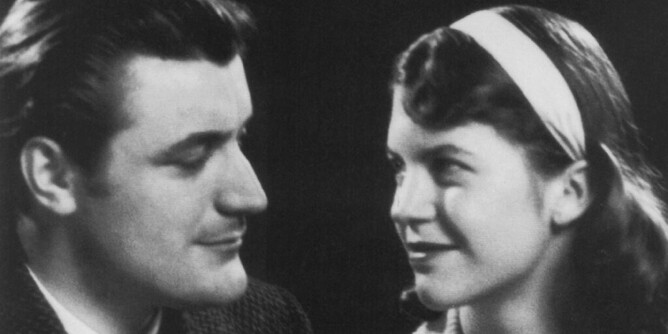In this Clear Education blog, we will explore the HSC Module A – Textual conversations, focusing on the two poets Sylvia Plath and Ted Hughes. The textual conversation explores the historical and social contexts informing each poet, particularly the collective loss of identity of women in the 1950s under the patriarchy, brought to light by the rise of second and third wave feminist movements. Plath’s confessional approach to her poetry reveals the collapse of her mental health, and continued struggle to regain her identity in an environment she feels is overbearing. Ted Hughes’ poetry further examines the destruction of his and Plath’s relationship, carefully crafting his external image in the process and revealing his aim to distance himself from criticisms. The quotes and analysis of each poem allow for the audience to understand these struggles and growing tensions within their relationship, and Hughes’ response to Plath’s representation of her mental state through his reconstruction of her portrayals.
Context: Sylvia Plath was born in 1932 to a German autocratic father, Otto, who passed away when Sylvia was at a young age. Plath grew up to become an outstanding student, which led her to receive a Fullbright Fellowship and apply to study at Cambridge University. It was at Cambridge where she met Ted Hughes and their relationship flourished. After giving birth to her first child in 1959, she became aware of Hughes' affair in the years following the birth. His affair, his ignorance of her mental deterioration and the impact of her social context during the 1960s contributed to a collection of poems titled ‘Ariel’. Plath passed away by suicide in 1963.
Ted Hughes released his own collection of poems titled ‘Birthday Letters’ in 1998, long after Plath’s death. Hughes’ poems confronted Plath’s confessional style of poetry by attempting to justify his actions and blame Plath’s father for her mental deterioration, stating it was this which ultimately led to her suicide. Hughes’ addresses and redirects this narrative in a post second and third wave feminist context, where sparked by the changing gender dynamics during WWII and the subsequent female liberations that spawned from this. The rise of such movements brought a stronger understanding of women’s mental health and further sympathy for the pressures of female stereotypes during Plath’s social context. This altered audience questioned Hughes’ misogynist attitude and ignorance for his wife’s mental health.
Example 1:
Plath’s poem “Daddy” is reflective of the masculine oppression represented by Hughes and her Father Otto, who also influenced the oppressed patriarchal values of her contextual time. Plath uses evocative imagery to reflect her inability to have a positive father role model, who’s suicide psychologically imprisoned her. The nursery rhyme allusion in Plath’s poem paradoxically presents her love for her authoritarian father Otto. Her eradication of the shoe also represents her feminist desire of liberation “you do not do/anymore, black shoe/which I have lived like a foot for thirty years.” Plath also presents mythological references to Hughes and Otto as “vampires'' who “drank my blood for a year, seven years”. This extended metaphor of death portrays her perspective about the oppressive men in her life..
Example 2:
Ted’s poem “Red” uses colour motif of red and blue to metaphorically villainize Plath and victimise himself for her mental trauma. The colour red is a motif of Plath’s change in emotions throughout their relationship. “You revelled in red, I felt it raw - like crisp gauze edges of a stiffening wound” Hughes’ evocative imagery explores Plath’s emotions of pain, anger and stiffness. The colour blue juxtaposes the red motif, the wings an extended metaphor of Plath's mental and emotional freedom. “Blue was better for you. Blue was your wings” “Blue was your kindly spirit” Hughes’ preference of blue reflects his misunderstanding still for his wife’s trauma by not acknowledging her mental struggles that are represented in this red motif.

